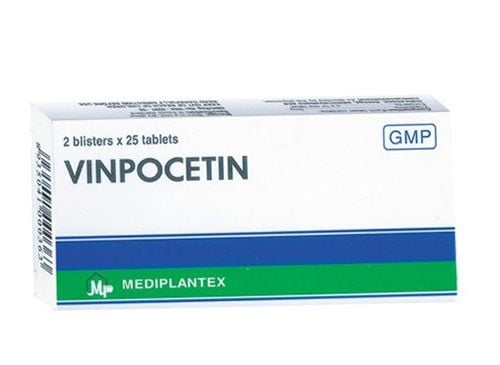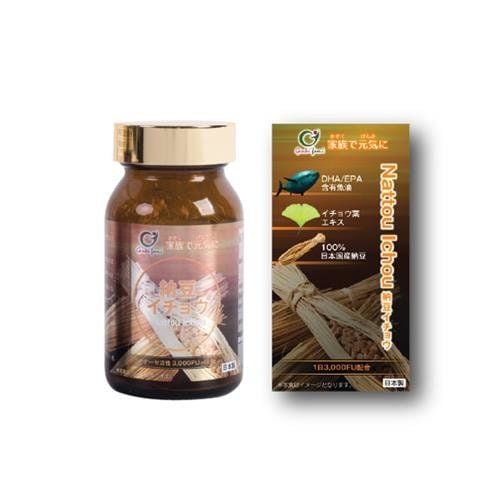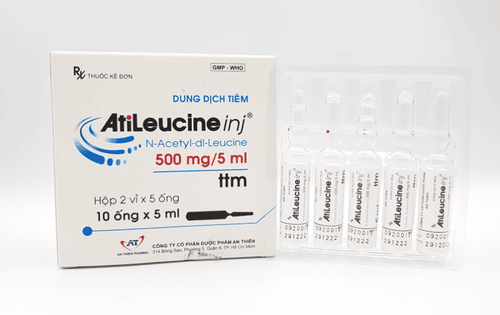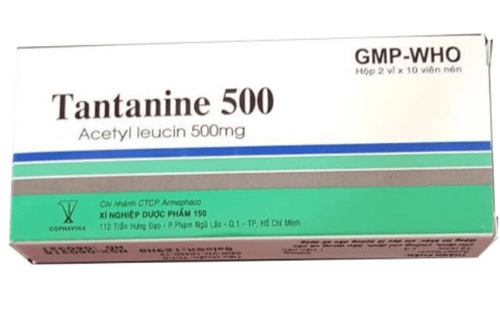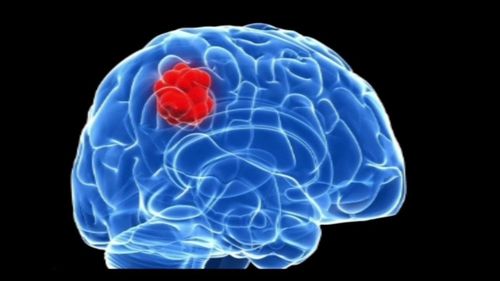This is an automatically translated article.
Headaches in children can cause blurred vision and sharp pain that can last from a few minutes to a few days. However, in some cases a headache is a serious warning sign. Detecting headaches and treating them in children is very important.1. Symptoms of headache in children
Children have the same headache symptoms as adults, but their symptoms can be different. For example, a headache in children can last less than four hours, while in adults, a migraine lasts at least four hours.1.1. Migraines Migraines can cause the following symptoms:
Sharp, pounding, or intermittent pain Pain that gets worse with exertion, emotional upset sometimes when crying because of too much pain Nausea little Colic Colic Highly sensitive to light and loud sounds Even babies can get migraines. However, children are too young to let parents know that they are in pain.
1.2. Tension-type headaches Tension-type headaches can cause symptoms such as:
A feeling of tightness in the muscles of the head or neck Mild to moderate pain, no pain on either side of the head Pain that does not get worse by physical activity Tension-type headaches are not accompanied by nausea or vomiting as is common with migraines.
In young children, they may play less and want more sleep. Tension-type headaches can last from 30 minutes to several days.
1.3. Cluster headaches Cluster headaches are uncommon in children under 10 years of age. Symptoms are:
Headache from one day to eight days Causes sharp, stabbing pain on one side of the head, usually lasting less than three hours Accompanied by tears, nasal congestion, runny nose, or restlessness or agitation Chronic daily headaches Doctors use the phrase "chronic daily headaches" (CDH) for migraines and tension headaches that occur more than 15 days a month. CDH can be caused by an infection, a minor head injury, or a child taking pain relievers — even over-the-counter pain relievers — too often.
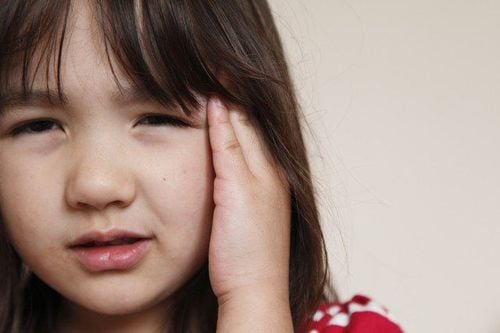
Trẻ em có triệu chứng bị nhức đầu giống người lớn, nhưng các triệu chứng của trẻ có thể khác nhau
2. How to cure headaches in children
Treatments for headaches in children include: getting enough rest, taking medication, changing lifestyle habits, and using therapies.If your child's headaches are caused by tension or tension headaches, give them rest. The pain reliever ibuprofen or acetaminophen is commonly used to treat headaches in children. However, you should not give your baby aspirin. The best way is to consult your doctor before giving the medicine to your baby. To treat migraines, the doctor prescribes Antofan, a safe and effective medicine for babies. This medication will help relieve pain, control symptoms of vomiting, nausea. Note, do not give aspirin to children under 16 years old because it can cause dangerous Reye's syndrome. Do not give your child too much pain reliever because when the medicine wears off, the child will feel the pain more intensely and may lead to abuse of pain medicine If the child has psychological problems such as depression or If you are worried, you should use therapy to treat it.
Therapies such as yoga, breathing exercises and meditation also help relieve stress. Cognitive-behavioral therapy is commonly used to treat depression. Biological rehabilitation is a therapy that helps to improve headaches in children by controlling unconscious body activities such as heart rate, blood pressure, etc. By controlling reactions This method will help control and accurately identify the factors that cause pain, thereby improving the effectiveness of pain treatment and prevention. Acupuncture and massage also help relieve tension headaches. Substances such as magnesium, riboflavin, and Coenzyme Q-10 also reduce how long the pain lasts.
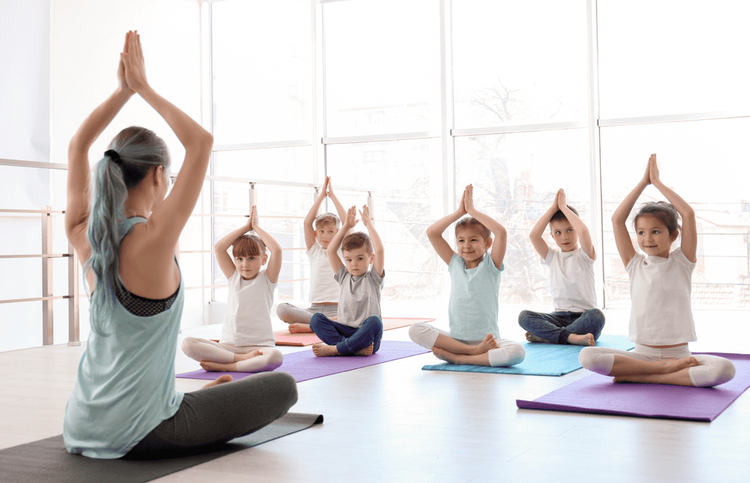
Các bài tập yoga có thể giảm bớt căng thẳng ở trẻ, giảm thiểu tình trạng đau đầu do căng thẳng
3. What should parents do when the child has a headache?
Encourage children to rest a lot, get enough sleep to reduce stress and fatigue. Give your child plenty of water or non-caffeinated beverages to avoid dehydration. Let your child rest and relax in a cool, dark room. Do all you can to reduce stress for your child when he or she has a tension headache or a migraine attack. Directing your child to follow a regular eating and sleeping schedule can help them feel more comfortable. For tension headaches in children, you can teach them relaxation techniques like deep breathing exercises. In addition, children can listen to tapes, CDs (soft music, sound of flowing streams, etc.) or you can read stories to them. Try massaging your child's shoulders and back of the neck, and applying ice to painful areas can help relieve headaches in children. If the headache in children makes the child physically weak and there are no signs of improvement, take your child to see a doctor soon for timely treatment.4. When is a headache in children dangerous?
If the occasional headache occurs in children and other times the child is fine, there is no need to worry too much. However, with the above signs, when the headache in children appears in the early morning and prevents the child from sleeping well, or the pain increases and occurs more often, this may be a warning sign. before a dangerous disease.Take your child to the doctor if you notice that your child has any of the above symptoms, or has vision changes, muscle weakness or seizures. In addition, it is also important to take your child to the doctor right away if the child has a severe headache or the headache prevents the child from participating in daily activities.
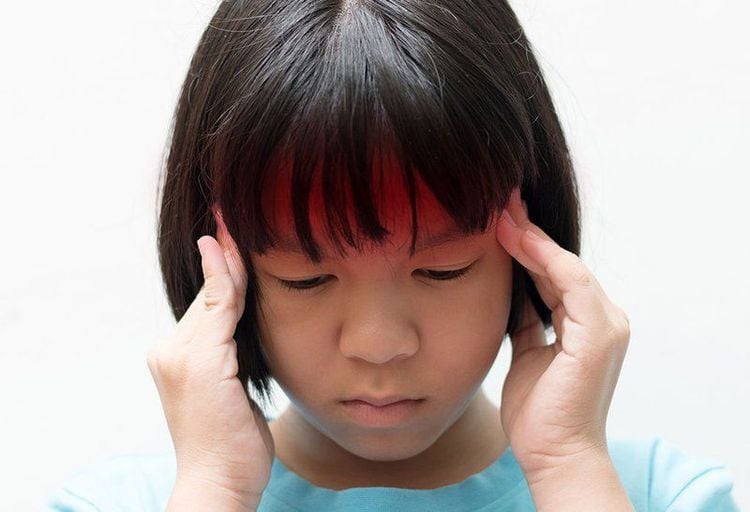
Hãy đưa trẻ đi khám bác sỹ nếu bạn thấy trẻ xuất hiện các triệu chứng kể trên, hoặc trẻ bị thay đổi thị lực
5. Where to check for headaches for children?
When symptoms of headache appear in children with no known cause, parents can take the child to a hospital at the district, provincial or central level (in case of severe disease).Vinmec International General Hospital is invested in machinery and equipment for examination. The hospital has full equipment such as: MRI 3.0 Tesla, PET-CT scan, computed tomography CT scan, histopathological diagnosis, gene-cell testing...
The department is invested methodically with a standard system of clinics and boarding rooms and has its own play area for children. The space of the department is brightly and colorfully decorated, creating a happy psychology for the children when they come here for medical examination, helping them to overcome their fear and get used to the hospital's environment.
If you have a need for medical examination at Vimec Health System nationwide, please make an appointment on the website to be served.
Please dial HOTLINE for more information or register for an appointment HERE. Download MyVinmec app to make appointments faster and to manage your bookings easily.




